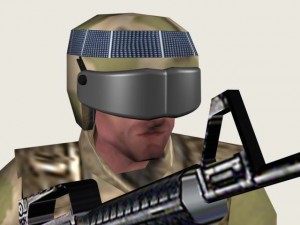I have written about the CRISPR patent tussle (Harvard & MIT’s [Massachusetts Institute of Technology] Broad Institute vs the University of California at Berkeley) previously in a Jan. 6, 2015 posting and in a more detailed May 14, 2015 posting. I also mentioned (in a Jan. 17, 2017 posting) CRISPR and its patent issues in the context of a posting about a Slate.com series on Frankenstein and the novel’s applicability to our own time. This patent fight is being bitterly fought as fortunes are at stake.
It seems a decision has been made regarding the CRISPR patent claims. From a Feb. 17, 2017 article by Charmaine Distor for The Science Times,
After an intense court battle, the US Patent and Trademark Office (USPTO) released its ruling on February 15 [2017]. The rights for the CRISPR-Cas9 gene editing technology was handed over to the Broad Institute of Harvard University and the Massachusetts Institute of Technology (MIT).
According to an article in Nature, the said court battle was between the Broad Institute and the University of California. The two institutions are fighting over the intellectual property right for the CRISPR patent. The case between the two started when the patent was first awarded to the Broad Institute despite having the University of California apply first for the CRISPR patent.
…
Heidi Ledford’s Feb. 17, 2017 article for Nature provides more insight into the situation (Note: Links have been removed),
It [USPTO] ruled that the Broad Institute of Harvard and MIT in Cambridge could keep its patents on using CRISPR–Cas9 in eukaryotic cells. That was a blow to the University of California in Berkeley, which had filed its own patents and had hoped to have the Broad’s thrown out.
The fight goes back to 2012, when Jennifer Doudna at Berkeley, Emmanuelle Charpentier, then at the University of Vienna, and their colleagues outlined how CRISPR–Cas9 could be used to precisely cut isolated DNA1. In 2013, Feng Zhang at the Broad and his colleagues — and other teams — showed2 how it could be adapted to edit DNA in eukaryotic cells such as plants, livestock and humans.
Berkeley filed for a patent earlier, but the USPTO granted the Broad’s patents first — and this week upheld them. There are high stakes involved in the ruling. The holder of key patents could make millions of dollars from CRISPR–Cas9’s applications in industry: already, the technique has sped up genetic research, and scientists are using it to develop disease-resistant livestock and treatments for human diseases.
But the fight for patent rights to CRISPR technology is by no means over. Here are four reasons why.
1. Berkeley can appeal the ruling
…
2. European patents are still up for grabs
…
3. Other parties are also claiming patent rights on CRISPR–Cas9
…
4. CRISPR technology is moving beyond what the patents cover
…
As for Ledford’s 3rd point, there are an estimated 763 patent families (groups of related patents) claiming CAS9 leading to the distinct possibility that the Broad Institute will be fighting many patent claims in the future.
Once you’ve read Distor’s and Ledford’s articles, you may want to check out Adam Rogers’ and Eric Niiler’s Feb. 16, 2017 CRISPR patent article for Wired,
The fight over who owns the most promising technique for editing genes—cutting and pasting the stuff of life to cure disease and advance scientific knowledge—has been a rough one. A team on the West Coast, at UC Berkeley, filed patents on the method, Crispr-Cas9; a team on the East Coast, based at MIT and the Broad Institute, filed their own patents in 2014 after Berkeley’s, but got them granted first. The Berkeley group contended that this constituted “interference,” and that Berkeley deserved the patent.
At stake: millions, maybe billions of dollars in biotech money and licensing fees, the future of medicine, the future of bioscience. Not nothing. Who will benefit depends on who owns the patents.
On Wednesday [Feb. 15, 2017], the US Patent Trial and Appeal Board kind of, sort of, almost began to answer that question. Berkeley will get the patent for using the system called Crispr-Cas9 in any living cell, from bacteria to blue whales. Broad/MIT gets the patent in eukaryotic cells, which is to say, plants and animals.
It’s … confusing. “The patent that the Broad received is for the use of Crispr gene-editing technology in eukaryotic cells. The patent for the University of California is for all cells,” says Jennifer Doudna, the UC geneticist and co-founder of Caribou Biosciences who co-invented Crispr, on a conference call. Her metaphor: “They have a patent on green tennis balls; we have a patent for all tennis balls.”
Observers didn’t quite buy that topspin. If Caribou is playing tennis, it’s looking like Broad/MIT is Serena Williams.
“UC does not necessarily lose everything, but they’re no doubt spinning the story,” says Robert Cook-Deegan, an expert in genetic policy at Arizona State University’s School for the Future of Innovation in Society. “UC’s claims to eukaryotic uses of Crispr-Cas9 will not be granted in the form they sought. That’s a big deal, and UC was the big loser.”
UC officials said Wednesday [Feb. 15, 2017] that they are studying the 51-page decision and considering whether to appeal. That leaves members of the biotechnology sector wondering who they will have to pay to use Crispr as part of a business—and scientists hoping the outcome won’t somehow keep them from continuing their research.
….
Happy reading!
